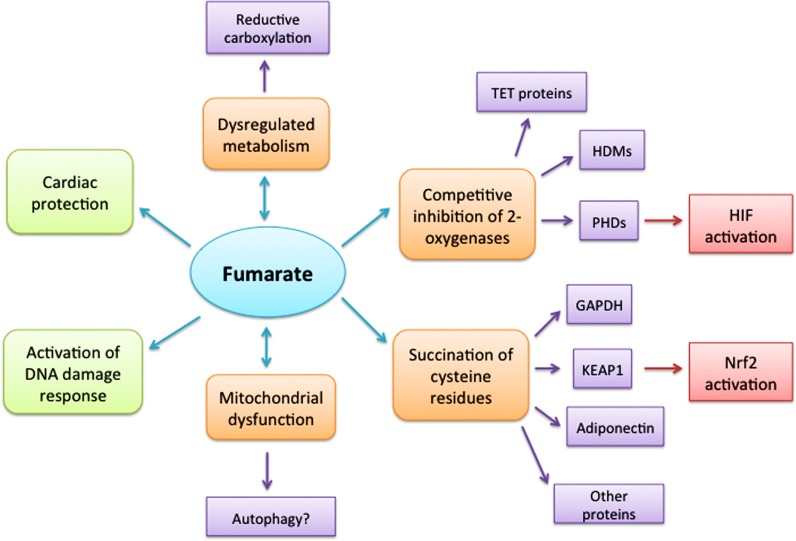FIGURE 1.
Consequences of elevated cellular fumarate. Loss of fumarate hydratase enzyme activity results in intracellular accumulation of fumarate with multiple diverse consequences. However, it remains to be determined whether some, or all of these, or indeed other as yet uncovered pathways, lead directly to oncogenesis. Dysregulated metabolism possibly linked to reductive carboxylation may both result from elevated fumarate and is certainly a cause of the elevated fumarate. Mitochondrial dysfunction is a feature of both altered metabolism and possibly high fumarate levels; but whether it is a contributing factor in oncogenesis needs to be determined and if autophagy leads to increased availability of nutrients for the cell. Fumarate has been shown to act as a competitive inhibitor of members of the 2-oxoglutarate-dependent oxygenase superfamily including the histone demethylase enzymes (HDMs), TET proteins and hypoxia-inducible factor (HIF) hydroxylases, thus activating oncogenic HIF pathways. However, further investigation is required to ascertain whether fumarate initiates oncogenesis via all, or any, of these routes. Succination of cysteine residues that could lead to disruption or loss of protein functions, dysfunctional cell metabolism and cell signaling offers a novel and promising route to link fumarate and oncogenesis directly. The benefits of fumarate proposed in activating a DNA damage response need to be addressed further, while the cytoprotective role proposed for fumarate in cardiac cells by diverting amino acids into the Krebs cycle and activating the Nrf2 antioxidant pathway suggests that different cell types may have different response strategies.

